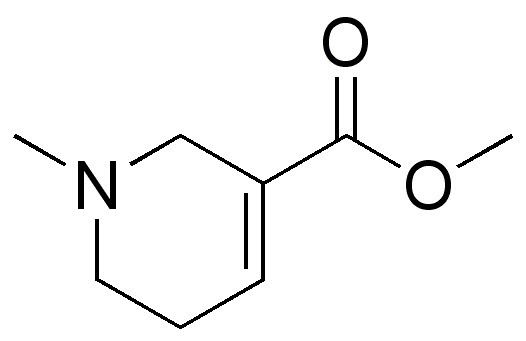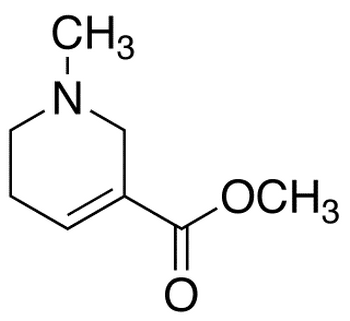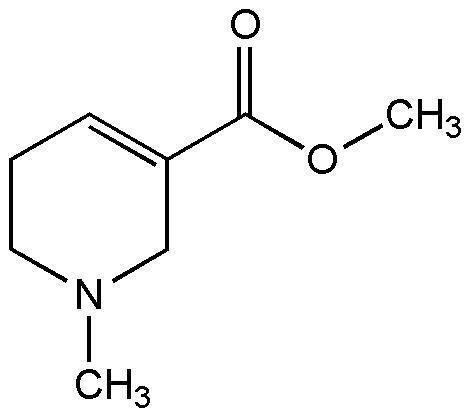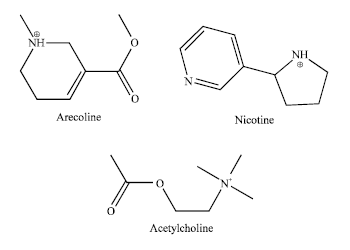ATC code none PubChem CID 2230 DrugBank DB04365 Density 1.05 g/cm³ | CAS Number 63-75-2 IUPHAR/BPS 296 Molar mass 155.194 g/mol CAS ID 63-75-2 | |
 | ||
Legal status In general: uncontrolled | ||
Arecoline hydrobromide in kai greene s savage roar safety statement
Arecoline (/əˈrɛkəliːn/) is a nicotinic acid-based alkaloid found in the areca nut, the fruit of the areca palm (Areca catechu). It is an odourless oily liquid.
Contents
- Arecoline hydrobromide in kai greene s savage roar safety statement
- Does arecoline hydrobromide arcofuel betel nut areca nut cause cancer the gainz trust episode 2
- Chemistry
- Biological action
- Uses
- References

Does arecoline hydrobromide arcofuel betel nut areca nut cause cancer the gainz trust episode 2
Chemistry

Arecoline is a base, and its conjugate acid has a pKa ~ 6.8. Arecoline is volatile in steam, miscible with most organic solvents and water, but extractable from water by ether in presence of dissolved salts. Being basic, arecoline forms salts with acids. The salts are crystalline, but usually deliquescent: the hydrochloride, arecoline•HCl, forms needles, m.p. 158 °C; the hydrobromide, arecoline•HBr, forms slender prisms, mp. 177-179 °C from hot alcohol; the aurichloride, arecoline•HAuCl4, is an oil, but the platinichloride, arecoline2•H2PtCl6, mp. 176 °C, crystallizes from water in orange-red rhombohedrons. The methiodide forms glancing prisms, mp. 173-174 °C.
Biological action

In many Asian cultures, the areca nut is chewed along with betel leaf to obtain a stimulating effect. Arecoline is the primary active ingredient responsible for the central nervous system effects of the areca nut. Arecoline has been compared to nicotine; however, nicotine acts primarily on the nicotinic acetylcholine receptor. Arecoline is known to be a partial agonist of muscarinic acetylcholine M1, M2, M3 receptors and M4, which is believed to be the primary cause of its parasympathetic effects (such as pupillary constriction, bronchial constriction, etc.).
LD50: 100 mg/kg, administered subcutaneously in mouse.

Current science is confident that areca nut chewing is carcinogenic. Research suggests this is probably at least partly because of arecoline itself, although it could also be from the other constituents of the nut as well, some of which are precursors to nitrosamines that form in the mouth during chewing. Section 5.5 Evaluation on page 238 of IARC Monograph 85-6 states the following:
Uses
Owing to its muscarinic and nicotinic agonist properties, arecoline has shown improvement in the learning ability of healthy volunteers. Since one of the hallmarks of Alzheimer's disease is a cognitive decline, arecoline was suggested as a treatment to slow down this process and arecoline administered intravenously did indeed show modest verbal and spatial memory improvement in Alzheimer's patients, though due to arecoline's possible carcinogenic properties, it is not the first drug of choice for this degenerative disease.
Arecoline has also been used medicinally as an antihelmintic (a drug against parasitic worms).
